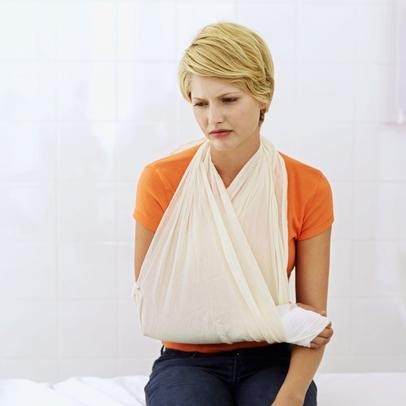First Aid - Broken Bones

Broken bones (or fractures) are a common injury in kids, especially after a fall. No matter what part might be broken or how big or small the injury may seem, all broken bones need medical care.
Signs and Symptoms
Your child may have a broken bone if:
you heard a "snap" or a grinding noise during an injury
there's swelling, bruising, or tenderness
the injured part is difficult to move or hurts when moving, being touched, or bearing weight
What to Do
If:
It's practically impossible to prevent every fracture, but you can make a break less likely by:
Signs and Symptoms
Your child may have a broken bone if:
you heard a "snap" or a grinding noise during an injury
there's swelling, bruising, or tenderness
the injured part is difficult to move or hurts when moving, being touched, or bearing weight
What to Do
- Remove clothing from the injured area.
- Apply an ice pack wrapped in cloth.
- Keep the injured limb in the position you find it.
- Place a simple splint, if you have one, on the broken area. A splint holds the bone still and protects it until the child is seen by the doctor. To make a temporary splint, you can use a small board, cardboard, or folded up newspapers and wrap it with an elastic bandage or tape.
- Get medical care and don't allow your child to eat or drink in case surgery is required.
If:
- You suspect a serious injury to the head, neck, or back.
- A broken bone comes through the skin. While waiting for help:
- Keep your child lying down.
- Do not wash the wound or push in any part that's sticking out.
It's practically impossible to prevent every fracture, but you can make a break less likely by:
- using safety gates at bedroom doors and at both the top and bottom of stairs (for babies or toddlers)
- enforcing helmet and safety gear rules for young athletes and any child riding a bicycle, tricycle, skateboard, scooter, or any type of skates and roller blades
- not using infant walkers
- 8e63b2fda6920e00628e87dc74dbc8804c.jpg